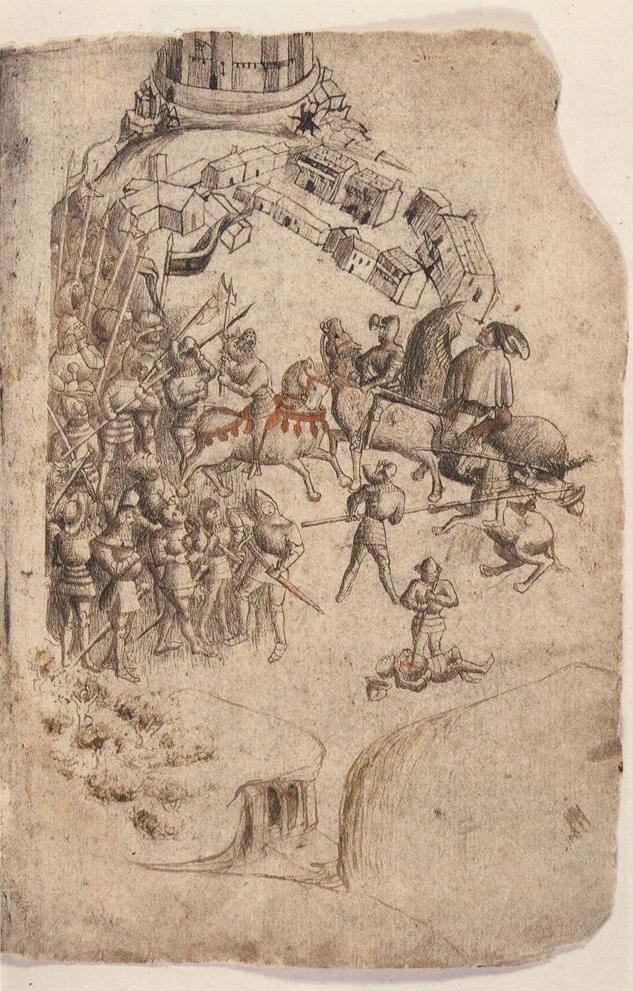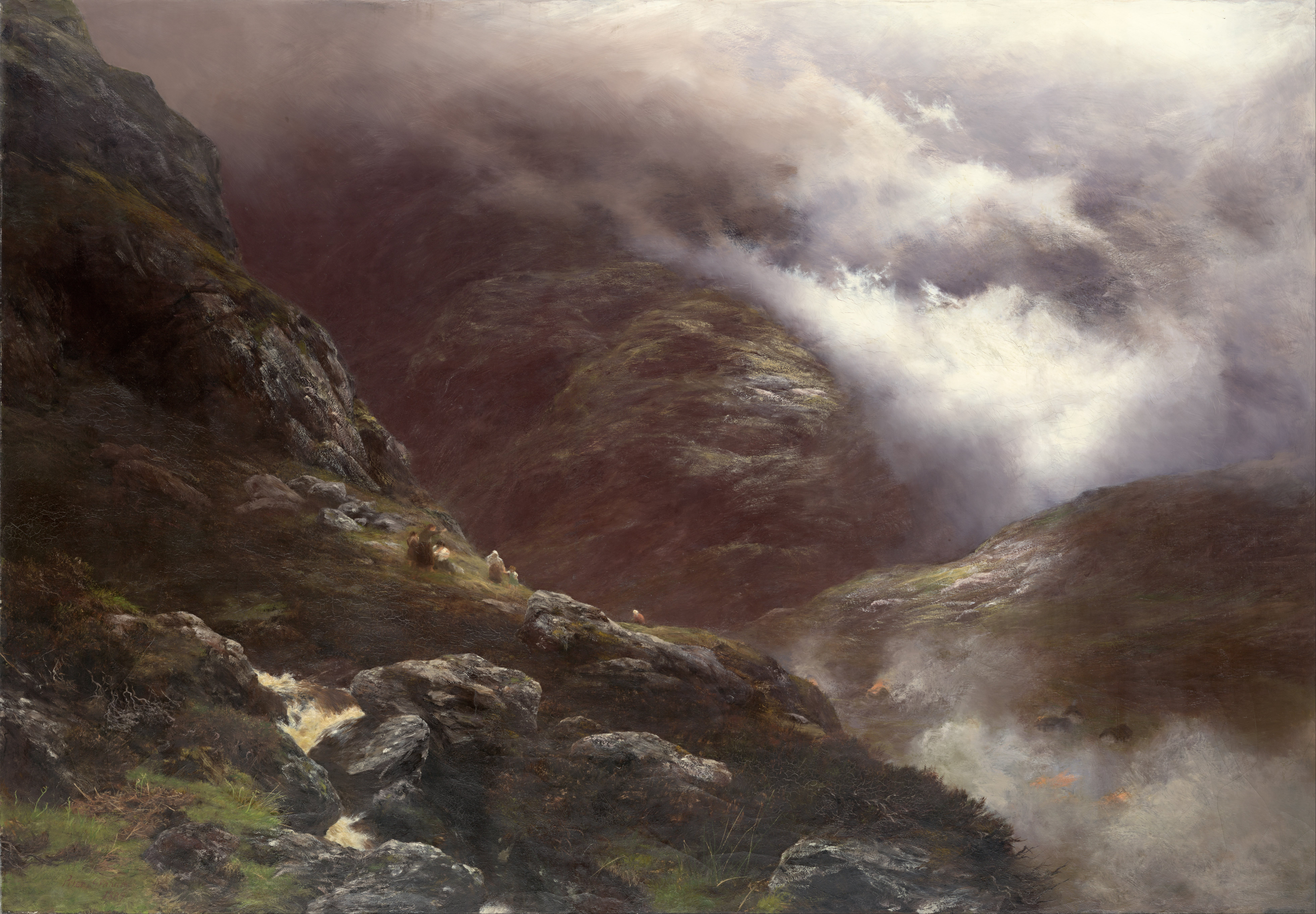Clan Campbell History: Exposing Scotland's Highland Legacy
by Teresa Finn on Jul 25, 2024
Table of Content
Clan Campbell history is deeply rooted in the rich tapestry of Scotland's ancient past. From their beginnings among the ancient Britons of Strathclyde to their expansion into Argyll, the Campbells have significantly shaped Scotland's cultural and political landscape. This article delves deep into the origins, territory, history, and castles associated with Clan Campbell, illuminating their legacy and enduring relevance in Scotland.
Origins of the Campbell Clan
The Campbell Clan's origins are deeply rooted in Scotland's ancient history. Traditional genealogies trace the Campbells to the ancient Britons of Strathclyde, a historical region in southwestern Scotland. The earliest recorded Campbell is Gillespie, whose name appears in documents from 1263. Initially connected to east-central Scotland, the Campbell family's influence gradually extended to Argyll, a significant region in the Scottish Highlands.
The Campbell name likely evolved from Clan O'Duine after a Campbell ancestor married the heiress of the O'Duines, acquiring the Lordship of Loch Awe. This marriage significantly increased their power and influence. The clan eventually became known as Clann Diarmaid, inspired by the legendary Celtic hero Diarmuid the Boar. The original seats of the Campbell Clan were Innes Chonnel Castle on Loch Awe and Caisteal na Nigheann Ruaidh on Loch Avich.
In the early days, the Campbells were dominated by the Lords of Lorne, the chiefs of Clan MacDougall. However, the power dynamics shifted dramatically after the MacDougalls killed the Campbell chief Cailean Mór (Colin Campbell) in 1296 during the Battle of Red Ford. From that point onward, all subsequent chiefs of Clan Campbell took the Gaelic patronymic MacCailean Mór, signifying their lineage from this significant leader.
Between 1200 and 1500, Clan Campbell emerged as one of Scotland's most powerful families. They established dominance in Argyll and expanded their influence throughout the Highlands and Edinburgh, making them a formidable force in Scottish politics and society.
Territory of the Campbell Clan

The Campbell Clan's territory is primarily centered in Argyll, a picturesque region in the Scottish Highlands known for its rugged landscapes and rich cultural heritage. Over time, the Campbells extended their influence to various parts of Scotland, including the Hebrides and the western Highlands.
The Campbells' initial seat was Innes Chonnel Castle on Loch Awe, crucial in establishing their presence in Argyll. As their power grew, the Campbells built numerous castles and fortified structures throughout their lands, solidifying their status as a prominent Highland clan.
Argyll remained the heartland of the Campbell Clan, and they played a significant role in the region's governance and development. The clan's strategic location allowed them to control key trade routes and maintain strong connections with other influential families in Scotland.
Over the centuries, the Campbells expanded their territory and influence through alliances, marriages, and military conquests. Their presence extended to various regions, including Kintyre, Islay, and Jura, and they held significant sway over the Hebrides and the western Highlands. The Campbell lordship became one of the most potent Gaelic entities in late medieval and early modern Scotland.
History of the Campbell Clan
13th Century: Foundations and Early Struggles
The history of Clan Campbell begins in 1263 with Gillespie Campbell, the first recorded member of the clan. A pivotal marriage alliance between Campbell and the heiress of the O'Duines significantly strengthened their position by bringing the Lordship of Loch Awe under their control, establishing a solid foothold in Argyll. The Battle of Red Ford in 1296, where the MacDougalls killed Chief Cailean Mór, proved a turning point. This event led subsequent chiefs to adopt the patronymic MacCailean Mór, honoring their fallen leader and reinforcing their lineage.
14th Century: Wars of Scottish Independence
In the early 14th century, the Campbells aligned themselves with King Robert the Bruce. This strategic decision greatly enhanced their influence and power. Their commitment was evident in their participation in the Battle of Bannockburn in 1314, where they fought bravely for Scotland's independence. Throughout the century, Clan Campbell's influence expanded rapidly, mainly due to the loyalty of Sir Neil Campbell, who was rewarded with extensive lands previously held by their enemies, including the MacDougalls and the Lords of Lorne.

15th Century: Royal Relations and Power Dynamics
The 15th century saw the Campbells continue demonstrating unwavering support for the Scottish Crown. By the end of the century, they had successfully diminished the power of the Lords of the Isles, emerging as the dominant force in the region. The lineage of Sir Duncan Campbell, 1st Lord Campbell, was particularly significant, as his marriage to Lady Marjorie Stewart, a descendant of Robert the Bruce and Robert II Stewart, further solidified the clan's royal connections. Duncan Campbell's ennoblement in 1445 marked a substantial elevation in the clan's status, and in 1457, Colin Campbell was granted lands in Knapdale and the title of Earl of Argyll, establishing the Campbells as one of Scotland's significant forces.

16th Century: Clan Conflicts and Expansion
The 16th century was marked by significant conflicts and the expansion of Clan Campbell's influence. The Battle of Flodden 1513 saw the death of the 2nd Earl of Argyll and many Campbell clan members, highlighting the clan's involvement in significant battles. Archibald Campbell, 5th Earl of Argyll, led forces fighting for Mary, Queen of Scots, during the Battle of Langside in 1568, demonstrating the clan's continued political engagement. Throughout the century, the Campbells engaged in numerous feuds with rival clans, including the MacArthurs and Clan Sinclair. This often resulted in violent clashes, such as the drowning of Clan Arthur and the Battle of Altimarlech. By the late 16th century, the Campbells had become one of Scotland's most influential families, controlling vast territories and maintaining a strong presence in both the Highlands and Lowlands.

17th Century: Civil War and Political Maneuvering
In the 17th century, the Campbells supported the central Government, which led to rewards like acquiring former MacDonald lands in Kintyre and purchasing the Isle of Islay. Despite suffering a defeat at the Battle of Inverlochy in 1645 at the hands of the Royalists led by James Graham, 1st Marquess of Montrose, the Campbells retained their influence. The ongoing feud with Clan Sinclair was showcased in the Battle of Altimarlech in 1680, where the Campbells secured a significant victory. The Massacre of Glencoe in 1692, a tragic event tied to the long-standing feud with Clan MacDonald, resulted in the killing of 38 members of Clan MacDonald of Glencoe and cast a shadow over the clan's reputation.

18th Century: Jacobite Uprisings and the Black Watch
During the Jacobite Rising of 1715, the Campbells supported the British-Hanoverian Government. They played a crucial role in the Battle of Sheriffmuir, where they helped secure a victory against the Jacobite forces. They were instrumental in forming the Black Watch regiment in 1725, reflecting their commitment to maintaining order and stability in the Highlands. In the Jacobite Rising of 1745, the Campbells again supported the British Government, participating in the Battle of Falkirk and the Siege of Fort William and ultimately contributing to the defeat of the Jacobite forces at the Battle of Culloden.

19th Century and Beyond
The 19th century saw a decline in the traditional clan system, and the Campbells adapted to the evolving social and political landscape. Despite this decline, the Campbell name continues to be associated with Scottish history, culture, and heritage, maintaining a significant legacy and influence.
Campbell Clan Castles
The legacy of Clan Campbell is exemplified in the stunning array of castles dotting the Scottish landscape. These structures served as fortified residences and symbols of the clan's power and prestige. Each Campbell Clan castle testifies to the clan's historical significance and adaptability across centuries.
Inveraray Castle: A Testament to Power

Inveraray Castle, one of the most iconic landmarks associated with Clan Campbell, is a testament to the clan's enduring power and influence. Construction of the castle began in the mid-18th century, although earlier iterations existed on the site. As the seat of the Duke of Argyll, the castle showcases the wealth and sophistication attained by the Campbells over the centuries.
The striking architecture and picturesque setting overlooking Loch Fyne make Inveraray Castle a popular destination for visitors seeking to connect with Scotland's storied past. The castle boasts splendid gardens, a rich collection of art and artifacts, and a fascinating glimpse into the lifestyles of the Campbell family throughout the generations. Its grandeur encapsulates the clan's transition from a formidable warrior lineage to a prominent aristocratic family.
Dunstaffnage Castle: A Historic Stronghold

Dunstaffnage Castle is another significant structure associated with Clan Campbell, showcasing the clan's historical roots and military prowess. Located near Oban, this castle dates back to the 13th century and served as an essential defensive stronghold for the Campbells. Its strategic location along the coastline allowed for oversight of maritime approaches, making it a crucial asset during the conflict.
The castle's architecture reflects its tumultuous history, with modifications made to withstand sieges and accommodate evolving defensive techniques. Although much of the structure now lies in ruins, Dunstaffnage continues to attract visitors intrigued by the tales of battles fought and alliances formed within its walls. It serves as a reminder of the clan's martial legacy and the importance of territorial control in shaping their history.
Innes Chonnel Castle: Cradle of the Clan

While Inveraray Castle often steals the spotlight as the grandest symbol of Clan Campbell, Innes Chonnel Castle holds a more understated yet equally significant place in the clan's history. Believed to be one of the earliest seats of the Campbells, this castle on the shores of Loch Awe is often considered the clan's ancestral home.
Although not as imposing as its later counterparts, Innes Chonnel Castle played a crucial role in establishing the Campbell's presence in Argyll. Its strategic location on the loch provided protection and access to vital water resources. While much of the original structure has yielded to the passage of time, the castle's ruins still stand as a poignant reminder of the clan's origins and enduring connection to the Scottish Highlands.
Explore the timeless traditions of the Clan Campbell through our collection of tartan products on our website. And bring a piece of the clan's history into your present. 🔥
Conclusion
The history of Clan Campbell reflects their strength, loyalty, and significant impact on Scotland's past. From their origins in the 13th century to their influential role in Scottish politics and society, the Campbells have shaped the Highlands' legacy. Their castles, such as Inveraray, Dunstaffnage, and Innes Chonnel, symbolize their power and heritage. To truly appreciate Scotland's rich history and the enduring spirit of Clan Campbell, explore their remarkable legacy and visit these historic sites.
Frequently Asked Questions
What is Clan Campbell famous for?
In 1314, the Campbells fought for Scotland against England in the Wars of Scottish Independence at the Battle of Bannockburn. Throughout the 14th century, Clan Campbell rapidly expanded its lands and power.
Which Scottish clan was the most powerful?
Clan Campbell was one of the largest and most powerful clans in the Highlands. Based primarily in Argyll, Clan Campbell's chiefs eventually became the Dukes of Argyll.
What is the origin of Clan Campbell?
The Campbell Clan traces its origins to the ancient Britons of Strathclyde, with the earliest recorded Campbell being Gillespie in 1263. The clan's power and influence grew significantly through strategic marriages and alliances, particularly with the Lordship of Loch Awe.
Are there any famous events tied to Campbell clan Scotland history?
Yes, several famous events are tied to the history of the Campbell clan, including the Battle of Bannockburn in 1314, the Battle of Flodden in 1513, the Massacre of Glencoe in 1692, and the formation of the Black Watch regiment in 1725.
How did Clan Campbell contribute to Scottish history?
Clan Campbell played a significant role in Scottish history through their involvement in major battles, strategic alliances, and support for the Scottish Crown. They were influential during the Wars of Scottish Independence, the Jacobite Uprisings, and other key historical events.












